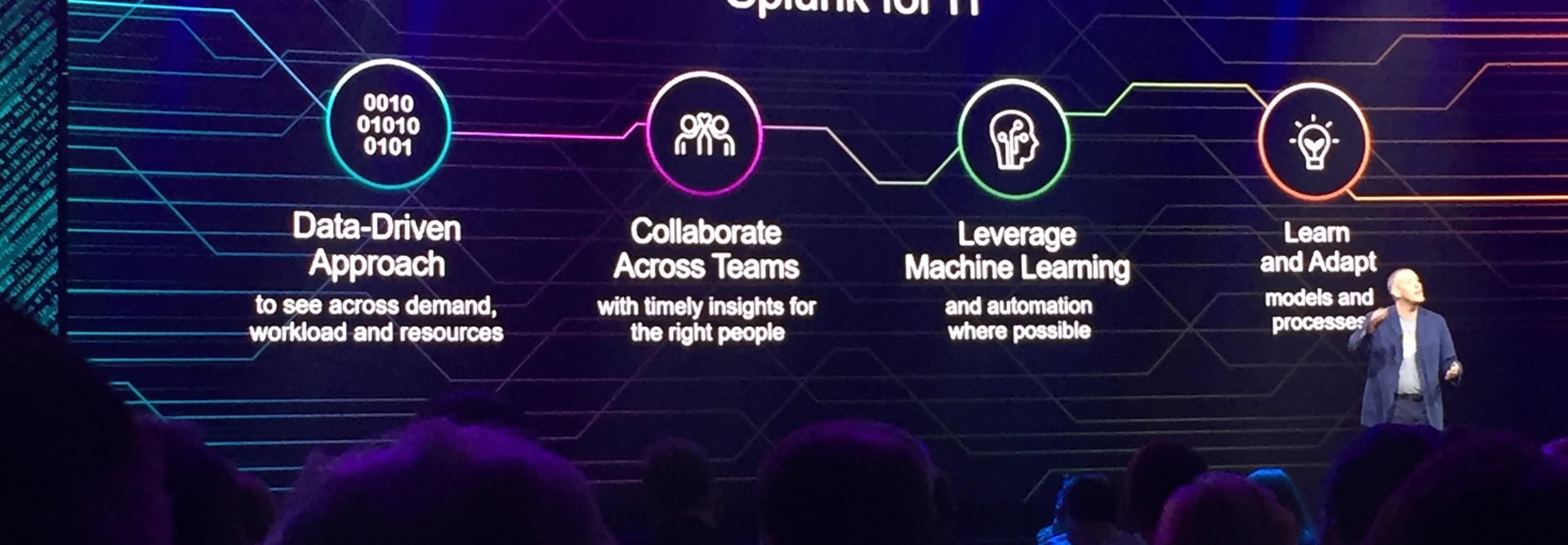Splunk .conf18: 3 Takeaways from Orlando
Optimizing the user experience is a major imperative for Splunk moving forward, which was on display time and again at its .conf18 event in Orlando, Fla., last week. The company’s unveiling of several new solutions and product upgrades is geared toward making data visualization an easy process for casual business users, said Andi Mann, Splunk’s chief technology advocate.
“For so many organizations, speed is everything,” Mann said. “Obviously, for software-type companies, getting new features out quickly is really important. We have a lot of software companies who use Splunk to help deliver their services. And you start to talk about things like manufacturing: how do you accelerate a production line? Where in your production line are you adding value? You get the most value out of your data if you get all of your data and share it among all of your business.”
Several companies and organizations at the conference shared stories that offer valuable lessons about how to get the most out of a future deployment. Here are three takeaways from the event.
JOIN THE CONVERSATION: Follow @BizTechMagazine on Twitter for continued Splunk .conf2018 coverage!
Prioritize Staff Training to Ensure an Effective Deployment
At the National Ignition Facility in Livermore, Calif., safety is of the utmost importance.
“We’re a large, inertial compliment fusion lighter that is about the size of three football fields,” NIF CTO Phillip Adams said. “Our mission is to study how matter reacts under very high temperatures and very high pressures.”
NIF’s primary focus has been on stockpile stewardship of nuclear weapons, Adams said — ensuring the nation’s nuclear arsenal is safe, secure and reliable. It uses Splunk’s Enterprise and IT Service Intelligence solutions to boost system uptime and performance and to take a proactive approach to potential IT hurdles. To that end, training is a high priority.
Of 1,100 people working on the NIF project, roughly 80 are Splunk power users, Adams said. Those power users generally are the individuals creating their own dashboards, but they also train the other staffers on how to best leverage Splunk’s data visualization tools.
“Make sure that there’s enough training for your folks,” Adams said.
Be Prepared for an Influx of Data
Shenandoah Telecommunications Company, based in Edinburgh, Va., serving more than 1 million subscribers in rural Virginia, West Virginia, Maryland and Pennsylvania, uses Splunk User Behavior Analytics to streamline its threat hunting process. In deploying the technology, however, IT Security Analyst John Decker said that at first, the volume and the variety of data uncovered can be intimidating.
“We didn’t know what was out there. We had no clue,” Decker said. “There was stuff we had no idea was going on on our networks that had been running there the whole time. As we went down through there, we were inundated to the point of data overload.”
Decker also said the variety of information surprised him.
“It was a growing experience,” he said. “The more and more we understood how UBA worked, we found that there were more and more things that we knew that were good, and we saw things that were bad. When you start seeing the user behavior analytics — the good and the bad — roll with it for a while, just roll with it. In the end, it’s a good thing.”
Businesses Should Embrace Innovation
While companies rolling out Splunk solutions generally have a specific use case in mind, it’s not uncommon to see organizations get innovative with their deployments.
“Our customers are some of the most innovative people I know,” Mann said.
Case in point: BMW, which uses Splunk’s Machine Learning Toolkit to create reliable traffic models in real time.
“We’ve had the ability to map GPS for a while, but we would never have thought to put our solutions to that use,” Mann said. “We’re data technology geeks. We’re looking at managing data and doing cross-correlations. BMW sees that and goes, ‘Now I can actually use this to manage traffic patterns.’”
Keep this page bookmarked for articles from the event. Follow us on Twitter @BizTechMagazine, or the official Splunk Twitter account, @splunk, and join the conversation using the hashtag #splunkconf18.









